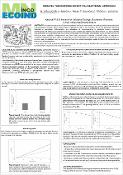Options
Unravel the pesticide effect via a bacterial approach
Date issued
2015
Abstract
A continuous increase of human population has been associated to a rapid agricultural expansion and crop production efficacy. Since around 30% of agricultural crop is lost to pests, the use of pesticides becomes
essential in agriculture. Unfortunately, the adaptation of microorganisms to pesticide toxicity increased tremendously the amount and chemical diversity of toxic compounds released into environment. So, the increased
crop production is counterbalanced by an often irremediable toxic damage of pesticides to the environment due to their low water solubility, environmental and food chain persistence inducing a harmful effect to organisms. Correlation between the toxic effects of pesticides to the environment and their toxic concentrations to humans is not very easy to establish, so it is imperative to find more simple biological models to follow the pesticide toxic effects and biodegradability. In this study, we used a bacterial model as biosensors for detecting the harmful effect of pesticides as well as decontaminates of pesticide-infested environment.
essential in agriculture. Unfortunately, the adaptation of microorganisms to pesticide toxicity increased tremendously the amount and chemical diversity of toxic compounds released into environment. So, the increased
crop production is counterbalanced by an often irremediable toxic damage of pesticides to the environment due to their low water solubility, environmental and food chain persistence inducing a harmful effect to organisms. Correlation between the toxic effects of pesticides to the environment and their toxic concentrations to humans is not very easy to establish, so it is imperative to find more simple biological models to follow the pesticide toxic effects and biodegradability. In this study, we used a bacterial model as biosensors for detecting the harmful effect of pesticides as well as decontaminates of pesticide-infested environment.
Files
Loading...
Name
BENA_Poster-MNL-25-5-15.pdf
Size
301.28 KB
Format
Adobe PDF
Checksum
(MD5):01545f7d415ae3f756070afeda44c484